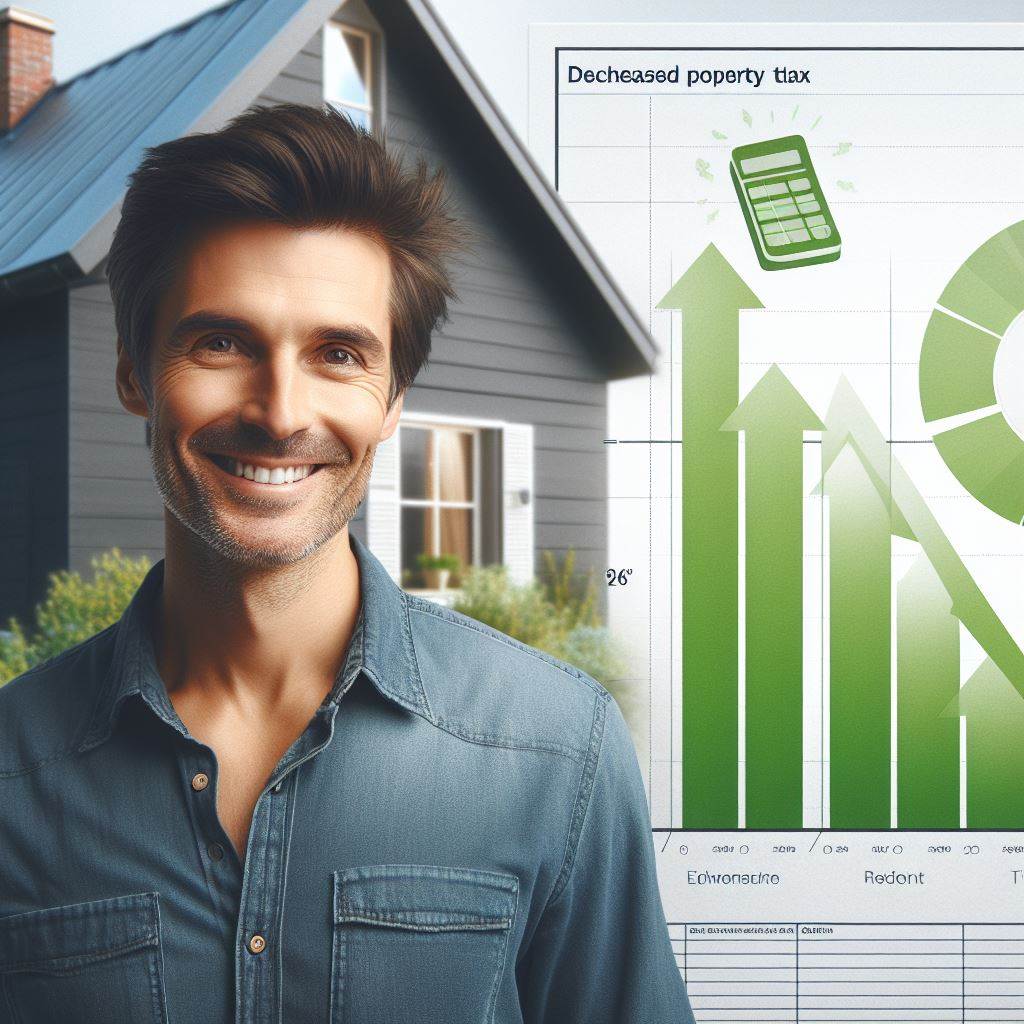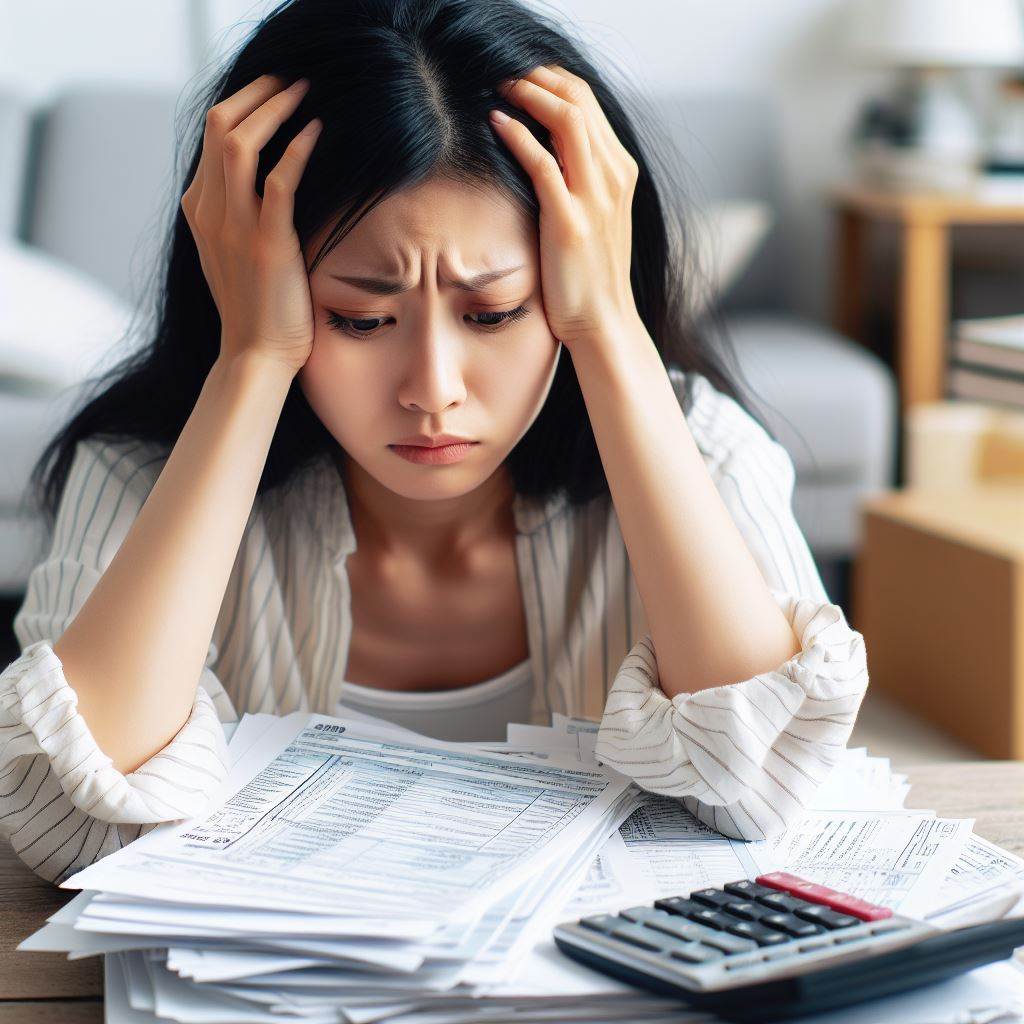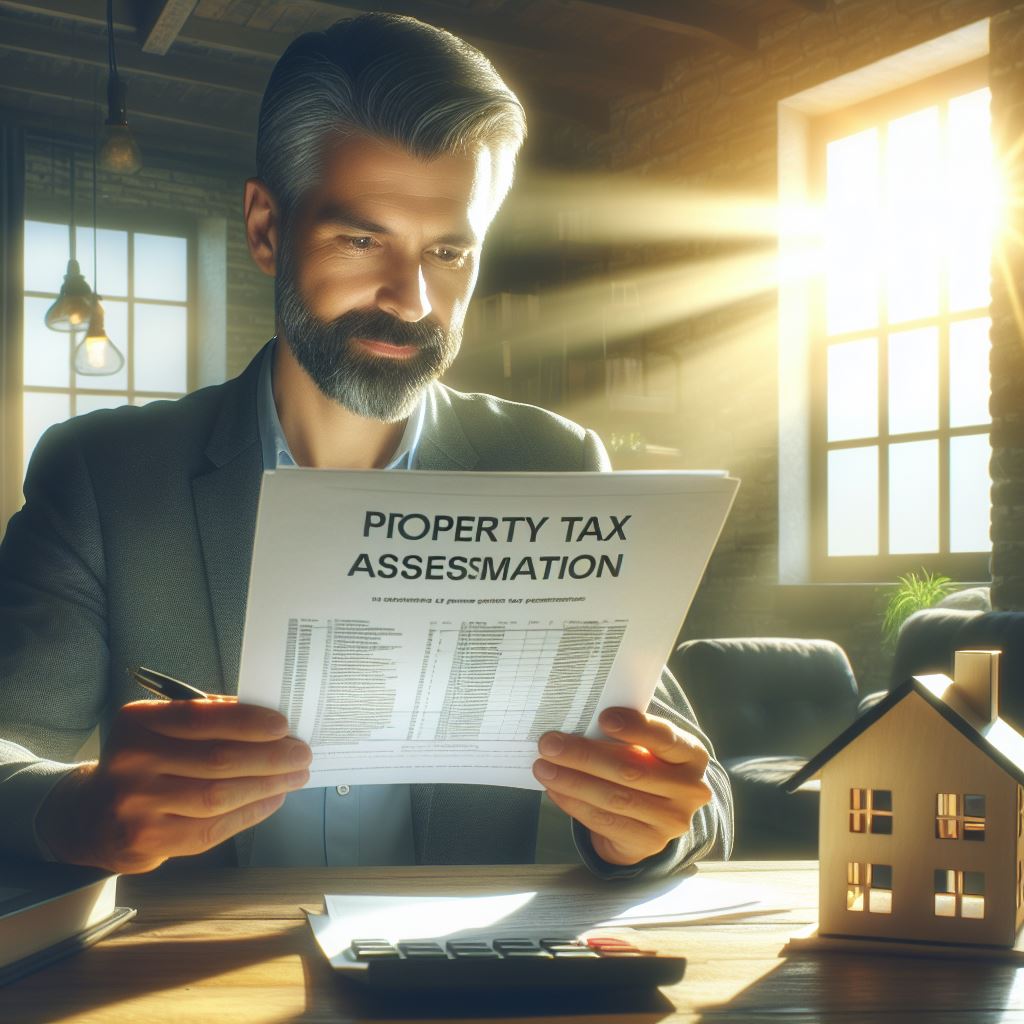Introduction
“Imagine cutting your property tax while saving the planet—green upgrades hold that power!”
Green upgrades are essential renovations or installations aimed at enhancing the energy efficiency and environmental sustainability of a property.
These upgrades can include installing solar panels, upgrading insulation, replacing windows with energy-efficient models, implementing smart thermostats, and using water-saving fixtures, among others.
The primary goal is to reduce the property’s carbon footprint and energy consumption while also improving overall comfort and sustainability.
The purpose of this blog post is to delve into the significant impact that green upgrades can have on property taxes.
While many homeowners are aware of the environmental benefits of such improvements, fewer may realize the financial benefits they can yield in terms of property tax reductions or incentives.
By understanding how green upgrades influence property tax assessments, homeowners can make informed decisions to not only contribute to a greener future but also potentially save money in the long run.
Understanding Green Upgrades
Definition of Green Upgrades
Green upgrades, also known as energy-efficient upgrades or eco-friendly improvements, refer to modifications made to a property with the aim of reducing its impact on the environment and improving its sustainability.
Various Types and Examples of Green Upgrades
- Energy-efficient lighting: Replacing traditional incandescent bulbs with LED lights can significantly reduce energy consumption.
- Insulation improvements: Proper insulation in walls, roofs, and windows helps maintain a comfortable indoor temperature and reduces the need for heating or cooling.
- Solar panels: Installation of solar panels allows for the generation of electricity from renewable sources, reducing reliance on fossil fuels.
- Water-efficient fixtures: Upgrading to low-flow toilets, faucets, and showerheads helps conserve water, benefiting both the environment and your utility bills.
- Energy-efficient appliances: Using appliances with high energy efficiency ratings can reduce electricity consumption and operational costs.
- Green roofing: Planting vegetation on roofs provides insulation, absorbs rainwater, and reduces the heat island effect in urban areas.
- Rainwater harvesting: Collecting rainwater for irrigation purposes can reduce water usage and strain on local water resources.
Benefits of Green Upgrades
- Environmental impact: Green upgrades contribute to reducing carbon emissions, conserving natural resources, and protecting ecosystems.
- Energy savings: Implementing energy-efficient upgrades can lead to long-term cost savings by reducing utility bills.
- Increased property value: Properties with green upgrades often have higher market value and can attract environmentally conscious buyers.
- Health benefits: Some green upgrades, such as improved ventilation and use of natural materials, can enhance indoor air quality and promote occupant well-being.
- Government incentives: Many governments offer financial incentives and tax credits to encourage green upgrades, making the process more affordable.
- Enhanced comfort: Upgrades like insulation and energy-efficient appliances can improve thermal comfort and overall livability of a property.
- Positive public image: Incorporating green upgrades showcases your commitment to sustainability and positions you as an environmentally responsible citizen.
By understanding the definition, types, and benefits of green upgrades, promoting environmental sustainability becomes an achievable goal that also positively impacts property owners.
Investing in green upgrades not only helps reduce our carbon footprint but also improves property value, saves energy and money, and contributes to a healthier living environment. It’s a win-win situation for both individuals and the planet.
Read: Property Tax and Home Improvements
Property Tax and Evaluation
In this chapter, we will explore the impact of green upgrades on property tax and how it affects property tax evaluation.
We will start by explaining what property tax is and then discuss the factors that are considered for property tax valuation.
Finally, we will delve into the traditional approach to property tax assessment.
Explanation of Property Tax
Property tax is a tax that is levied on real estate by the government to fund public services and local infrastructure.
Transform Your Real Estate Decisions
Unlock personalized real estate insights crafted just for you. Get actionable advice designed to amplify your success.
Get StartedIt is typically calculated based on the assessed value of the property.
Property tax is an essential source of revenue for local governments and is used to support various public services such as education, road maintenance, police and fire protection, and parks and recreation.
Factors Considered for Property Tax Valuation
When determining the assessed value of a property for tax purposes, several factors are taken into consideration:
- Location: Properties in desirable locations or neighborhoods tend to have higher assessed values.
- Size and Amenities: The size of the property, number of bedrooms and bathrooms, and other amenities contribute to its assessed value.
- Recent Sales: The sale prices of comparable properties in the area are often used as a benchmark for assessing a property’s value.
- Condition: The overall condition of the property, including any upgrades or renovations, can affect its assessed value.
These factors, among others, are analyzed by local tax assessors to determine the fair market value of the property and determine the appropriate amount of property tax.
Traditional Approach to Property Tax Assessment
In the traditional approach, property tax assessments are typically carried out periodically, often every few years, by local tax assessors.
The assessors visit properties and conduct physical inspections to assess their value.
They consider factors such as the property’s location, size, amenities, and condition.
The assessed value is then used to calculate the property tax owed by the owner.
However, with the increasing focus on sustainability and energy efficiency, the traditional approach to property tax assessment is evolving.
Green upgrades, such as solar panels, energy-efficient appliances, and insulation, are now being taken into consideration.
Property owners who invest in green upgrades can potentially receive tax incentives or exemptions.
These incentives are aimed at encouraging environmentally friendly practices and reducing carbon footprints.
The impact of green upgrades on property tax varies by location and jurisdiction.
Some governments may provide specific tax breaks or grants for certain upgrades, while others may incorporate energy-saving measures into the overall property assessment.
Showcase Your Real Estate Business
Publish your company profile on our blog for just $200. Gain instant exposure and connect with a dedicated audience of real estate professionals and enthusiasts.
Publish Your ProfileBy promoting green upgrades, local governments aim to encourage property owners to adopt sustainable practices and reduce energy consumption.
However, it is crucial for property owners to understand the specific guidelines and regulations related to green upgrades and property tax assessments in their area.
In fact, property tax is an important source of revenue for local governments, and the assessed value of a property plays a significant role in determining the tax amount.
Factors such as location, size, amenities, and condition are traditionally considered for property tax valuation.
As the focus on sustainability increases, green upgrades are being recognized and incentivized in property tax assessments.
By incorporating energy-efficient upgrades, property owners not only contribute to the environment but may also benefit from potential tax incentives.
It is essential for property owners to stay informed about local regulations and guidelines regarding green upgrades and property tax assessment to navigate these changes effectively.
Read: Rental Properties and Tax Implications
Impact of Green Upgrades on Property Tax
Green upgrades have the potential to impact property taxes in various ways.
In this section, we will explore the incentives and tax credits for green upgrades, the relationship between increased property value and tax assessment, and the methods used to determine energy efficiency improvements.
Incentives and tax credits for green upgrades
Many governments and utility companies offer incentives and tax credits to encourage green upgrades.
These incentives and credits can help homeowners offset the costs associated with energy-efficient improvements.
By taking advantage of these incentives, homeowners can decrease their overall expenses and potentially save money in the long run.
It is essential for homeowners to research and understand the available incentives and tax credits in their specific jurisdiction.
Increased property value and its relation to tax assessment
Green upgrades often result in increased property value due to improved energy efficiency and sustainability.
When property values increase, there is a potential for higher tax assessments.
However, some jurisdictions have implemented legislation that caps property tax increases to protect homeowners from significant tax burdens.
It is crucial to be aware of local laws and regulations regarding property tax assessments and their relation to green upgrades.
Methods used to determine energy efficiency improvements
There are various methods used to evaluate energy efficiency improvements in properties.
Energy audits are commonly conducted to assess a property’s energy consumption and identify areas for improvement.
These audits may include analyzing insulation, HVAC systems, lighting, and other energy-consuming components.
Additional factors such as the property’s location, size, and building materials may also be considered in the assessment.
The results of energy efficiency evaluations can determine the extent of tax incentives, credits, and potential property value increases.
In short, green upgrades have a significant impact on property taxes. Homeowners can take advantage of incentives and tax credits to reduce their expenses.
However, they should also consider the potential increase in property value and subsequent tax assessment.
Conducting energy audits and evaluating energy efficiency improvements are crucial steps in determining the impact of green upgrades on property tax.
By understanding these factors, homeowners can make informed decisions and reap the benefits of sustainable, energy-efficient improvements.
Read: Senior Exemptions in Property Taxation

Case Studies and Real-Life Examples
Case studies and real-life examples demonstrate the positive impact of green upgrades on property taxes.
Homeowners who invest in energy-efficient technologies and sustainable features not only enjoy lower energy costs but also experience an overall increase in property value.
Showcase Your Real Estate Business
Publish your company profile on our blog for just $200. Gain instant exposure and connect with a dedicated audience of real estate professionals and enthusiasts.
Publish Your ProfileWhile property taxes may slightly increase due to the enhanced value, the financial benefits outweigh the tax burden.
The following examples illustrate how green upgrades contribute to these benefits.
Example of a property with green upgrades and its impact on property tax
A homeowner residing in New York city decided to make environmentally friendly upgrades to their property, including installing solar panels and energy-efficient appliances.
As a result, the property’s assessed value increased, reflecting the value of the green improvements.
Consequently, the homeowner’s property tax also increased but at a lower rate compared to the appreciation in property value.
The homeowner benefits from reduced energy bills, resulting in substantial cost savings that overshadow the slight tax increase.
Case study showing before and after property tax assessments after green upgrades
In another case study conducted in Manfield town, a homeowner renovated their property with various green features.
Prior to the upgrades, the property had a assessed value of $250,000, attracting an annual property tax bill of $4,500.
After the installation of green upgrades, the assessed value of the property increased to $300,000.
However, the property tax only increased to $5,000, which is a relatively marginal increase.
The homeowner gains the advantages of a greener home, augmented property value, and a minimal tax burden increase.
Benefits experienced by homeowners through lower property taxes
Homeowners who invest in green upgrades often qualify for tax incentives or exemptions.
By taking advantage of these programs, property owners can significantly lower their property tax burden.
Moreover, these upgrades contribute to energy savings, leading to reduced monthly utility bills.
The combined benefits of lower property taxes and reduced energy costs result in substantial long-term savings for homeowners.
Additionally, eco-friendly homes tend to attract environmentally conscious buyers, leading to increased property value.
In general, case studies and real-life examples highlight the positive outcomes of green upgrades on property taxes.
While homeowners may experience a slight increase in property taxes due to enhanced value, the financial benefits from reduced energy costs and increased property value outweigh the tax burden.
Therefore, investing in green upgrades not only promotes sustainable living but also provides economic advantages for homeowners.
Read: Condo Insurance: What You Need to Know
Analyzing the Cost-Benefit Ratio
In this section, we will analyze the cost-benefit ratio of investing in green upgrades for your property.
By calculating the costs associated with such upgrades and the financial savings achieved through reduced property tax, we can determine if it is a worthwhile investment.
Calculation of costs associated with green upgrades
Before delving into the cost-benefit analysis, it is important to understand the expenses involved in implementing green upgrades.
These costs can vary depending on the type and scale of the upgrades.
- Installation of energy-efficient appliances, such as solar panels or energy-efficient HVAC systems, may require a significant initial investment.
- Insulation and weatherization upgrades might involve hiring professionals or purchasing materials.
- Upgrading to sustainable materials and eco-friendly fixtures could incur additional costs.
By carefully evaluating the specific upgrades you plan to make, you can determine an accurate estimate of the costs involved.
Financial savings achieved through reduced property tax
One of the major benefits of green upgrades is the potential for reduced property taxes.
Many municipalities offer tax incentives for properties that meet certain eco-friendly criteria.
- These incentives can include property tax exemptions, rebates, or deductions.
- Some regions provide tax credits for specific types of green upgrades, such as solar panels.
- By leveraging these benefits, you can significantly reduce the amount of property tax you pay annually.
It is essential to research and understand the tax policies and incentives in your area to accurately determine the potential savings.
Overall cost-benefit analysis of investing in green upgrades
After calculating both the costs and potential savings, it is time to conduct an overall cost-benefit analysis of investing in green upgrades.
- Consider the initial costs of the upgrades against the potential savings through reduced property tax.
- Factor in the long-term financial benefits, such as energy savings and lower utility bills.
- Take into account the positive environmental impact and potential increased property value that green upgrades can bring.
By comparing these factors and weighing them against each other, you can determine if investing in green upgrades is financially viable.
Showcase Your Real Estate Business
Publish your company profile on our blog for just $200. Gain instant exposure and connect with a dedicated audience of real estate professionals and enthusiasts.
Publish Your ProfileIt is important to note that while the initial costs may seem significant, the long-term savings and benefits of green upgrades often outweigh them.
Moreover, as more homeowners embrace eco-friendly practices, the demand for properties with green features is increasing, resulting in potential future financial gains.
In review, analyzing the cost-benefit ratio helps homeowners make informed decisions regarding green upgrades.
By calculating the costs, assessing potential savings, and conducting an overall cost-benefit analysis, individuals can determine if investing in green upgrades aligns with their financial goals and sustainability values.
Tips for Maximizing Tax Savings with Green Upgrades
When it comes to making green upgrades to your property, not only can you enjoy the environmental benefits, but you can also maximize your tax savings.
Here are some valuable tips to consider:
Researching available tax incentives and credits
- Explore the various tax incentives and credits available for green upgrades in your area.
- Look for federal, state, and local programs that can help offset the cost of your green renovations.
- Check if there are any specific requirements or qualifications you need to meet to be eligible for these incentives.
- Consider consulting a tax professional to ensure you don’t miss out on any potential tax savings.
Understanding local property tax assessment policies
- Familiarize yourself with the property tax assessment policies in your locality.
- Find out how green upgrades and energy-efficient features are treated in the assessment process.
- Check if your municipality offers any tax breaks or exemptions for eco-friendly properties.
- Be aware of any limitations or conditions that may affect your eligibility for these benefits.
Collaborating with professionals for accurate evaluation and assessment
- Engage the services of experienced professionals such as appraisers and energy auditors.
- Have your property accurately evaluated to determine the potential increase in value due to green upgrades.
- Get an energy audit to assess the energy efficiency and savings resulting from your eco-friendly improvements.
- Collect all the necessary documentation and reports to support your tax savings claims.
By following these tips, you can ensure that you make the most of your green upgrades and maximize your tax savings.
However, it’s important to consult with a tax professional or advisor to navigate the specific tax laws and regulations in your jurisdiction.
They can provide personalized guidance and help you take full advantage of available incentives.
Remember that maximizing tax savings with green upgrades not only benefits you financially but also contributes to a sustainable future.
So, take the necessary steps to research, understand local policies, and collaborate with professionals to make a positive impact while saving money.
Conclusion
Recap of key points discussed
Throughout this chapter, we have explored the impact of green upgrades on property tax.
We learned that certain green upgrades, such as solar panels and energy-efficient appliances, can potentially increase property value and subsequently property tax.
On the other hand, certain tax incentives and exemptions are available in some jurisdictions to encourage homeowners to invest in green upgrades.
Encouragement for homeowners to consider green upgrades
Considering the potential benefits of green upgrades, it is important for homeowners to seriously consider making such improvements to their properties.
Not only can green upgrades contribute to a more sustainable future, but they can also result in long-term cost savings, increased comfort, and improved indoor air quality.
Final thoughts and call to action
The impact of green upgrades on property tax should not deter homeowners from embracing sustainable practices.
By seeking out available tax incentives and exemptions, homeowners can mitigate any potential increases in property tax and make environmentally responsible choices.
We encourage all homeowners to take the necessary steps towards implementing green upgrades in their homes.
Whether it’s through energy-efficient appliances, solar panels, or improved insulation, every small change can make a significant difference in reducing our carbon footprint and protecting the environment for future generations.
Let’s seize this opportunity to create a more sustainable future and take action towards making our homes greener.
Together, we can make a positive impact on our planet and enjoy the numerous benefits that come with green upgrades.




